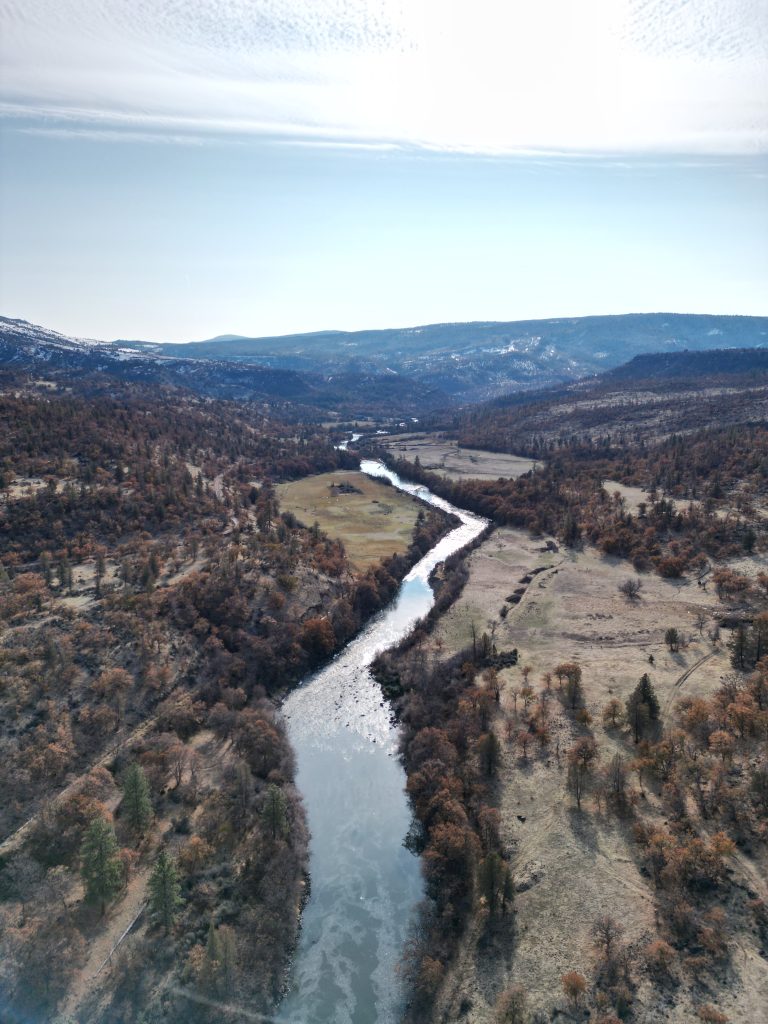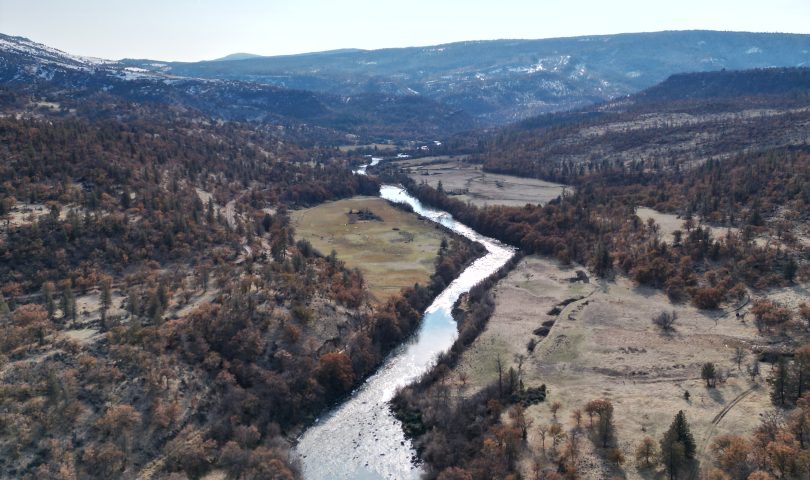Source FarmProgress.com
Tribal communities in far northern California that were excited over dam-removal plans on the Klamath River are now complaining about a proposal to cut river flows to fill the drought-depleted Upper Klamath Lake.

Where Klamath River Enters California on its journey to the Pacific Ocean
Officials from the Yurok and Karuk tribes say the U.S. Bureau of Reclamation is considering a proposal to cut river flows by 40% when flows are already below recommended minimums.
“The river is already suffering from inadequate flows. The salmon simply have no more to give,” Yurok biologist Barry McCovey noted in a release sent to reporters. McCovey adds that endangered Coho salmon are currently spawning in the mainstem of the Klamath River because flows in tributaries in which they normally spawn are too low. “Cutting water now will kill salmon eggs, possibly wiping out the entire run.”
Related: FERC approves Klamath dam removals in ’24
The Klamath Water Users Association, which represents farmers, ranchers and irrigation districts in the Klamath Basin straddling the Oregon-California state line, says flow reductions in the river are necessary to preserve lake levels. The KWUA says that means reducing one-third of the current flow, reports KOBI-TV in Medford, Ore.
“Upper Klamath Lake is not filling and all projections are for that condition to persist well into 2023,” KWUA water policy director G. Moss Driscoll wrote in a letter to federal agencies. “Three years of conflict, controversy, and hardship in the Klamath Basin have demonstrated that, in the wake of the current ongoing drought, simply continuing the present rate of releases out of Upper Klamath Lake is the worst possible outcome for fish, wildlife, and humans alike. The U.S. Bureau of Reclamation has conceded as much with its recent initiation of the meet-and-confer process under the Interim Operations Plan.
He added the proposal is aimed at providing a specific, concrete plan for filling the lake.
Must act now
“Admittedly, the action required now would constitute a significant reduction in river flows compared to current levels, but that condition is the result of a failure to act before now,” he wrote. “Moreover, failure to take immediate action now only further compounds the problem that has already been created. It is well past time to act.”
But the tribes assert the Klamath Drainage District in Klamath Falls, Ore., is making matters worse by diverting nearly 1,000-acre feet of water a day from the Klamath. This diversion is deemed illegal by federal agencies, but so far, no law enforcement agency has acted to stop it, the tribes say.
“We are removing dams and Congress has provided significant restoration dollars to the Klamath, but at the end of the day fish still need water,” said Karuk Chairman Russell ‘Buster’ Attebery. “We call on the Administration to act promptly to stop illegal water diversions.”
Related: Klamath dam removals enter ‘home stretch’
Irrigation districts in late summer resisted Reclamation’s order to abruptly stop irrigation deliveries amid the worsening drought. Districts argued that ending water deliveries then would cause crops to burn up in the field before harvest.
The dispute comes after tribal members gathered with state and federal officialsin early December to celebrate the final approval of a plan to remove four hydroelectric dams from the Klamath River to improve flows for imperiled fish.
The Federal Energy Regulatory Commission issued a final licensing order in November that allows for the controversial removal of the dams by 2024. The decision clears the final hurdle for the Klamath River Renewal Corp., which has been pushing removal of the dams for more than a decade, to team with California and Oregon in accepting transfer of the project license from energy company PacifiCorp and start the dam removal process early next year.
Proponents claim the dam removals will be the largest river restoration project in U.S. history, opening up hundreds of miles of habitat for a salmon fishery that has been in decline. Though the dams don’t provide water for irrigation, some growers and political leaders fear the dams’ removal will drive up energy costs and perhaps lead to reductions in water for farms.
Haaland tours area
U.S. Interior Secretary Deb Haaland on Dec. 8 toured the Iron Gate Fish Hatchery with California Gov. Gavin Newsom; Oregon Gov. Kate Brown; Rep. Jared Huffman, D-Calif.; representatives from the Klamath Basin Tribes; and other officials and stakeholders to celebrate the dams’ planned decommissioning.
During her stop, Haaland announced that four tribal water projects in the Basin will get $5.8 million through the Bureau of Reclamation to restore aquatic ecosystems, improve the resilience of habitats, and mitigate the effects of the ongoing drought crisis.
The funding is made available through Reclamation’s Native American Affairs Technical Assistance to Tribes Program.
Source: Klamath Water Users Association; Klamath and Yurok tribes; U.S. Bureau of Reclamation





